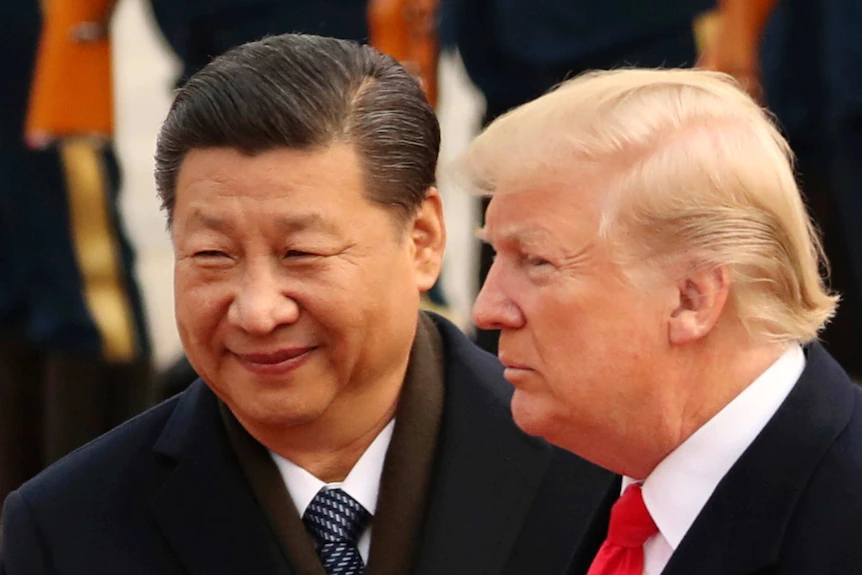Israel Aligns with U.S. Stance on Extending Gaza Ceasefire: A Step Towards Peace?
Of course! Please provide the article excerpt you would like me to rewrite

In recent developments on the Middle Eastern political landscape, Israel has aligned closely with the United States regarding the potential extension of the ceasefire in Gaza. This crucial yet sensitive maneuver raises questions of diplomacy and stability in one of the world’s most volatile regions. As the international community watches closely, this strategic decision brings forward a new chapter in the dialogue surrounding Israeli-Palestinian relations.
The Context of the Ceasefire
For decades, the Gaza region has been a focal point of conflict, with periodic outbreaks of violence leading to devastating humanitarian consequences. The ceasefire, established as a temporary reprieve, has granted essential humanitarian access to beleaguered districts within Gaza. However, the fragile nature of this peace raises critical inquiries about its sustainability.
Key aspects of the current ceasefire include:
- Humanitarian Aid Access: The pause in hostilities allows for the delivery of essential supplies to Gaza’s population, which has faced immense hardships.
- International Observers: The role of international organizations and observers in the region has increased, aiming to monitor ceasefire violations and ensure accountability.
- Diplomatic Engagement: The ceasefire provides an opening for renewed diplomatic efforts aimed at a more comprehensive peace agreement.
The decision for Israel to align its stance with that of the United States, a key ally in the region, signals a conscious step towards potential long-term peace. It highlights the significance of cooperation in addressing the multifaceted challenges of the region’s politics.
Historical Perspectives
The alignment between Israel and the United States is not novel, but it underscores a historical bond that has influenced policies both locally and internationally. The U.S. has been a staunch ally of Israel since its establishment in 1948, advocating for its security while also offering economic and military support. This relationship, however, has often been met with skepticism by neighboring nations and Palestinian groups who view it as an imbalance in the ongoing quest for peace.
Over the years, various peace initiatives have been proposed by successive U.S. administrations, yet the delicate nature of the Israeli-Palestinian conflict has thwarted many efforts. The importance of understanding past interactions is critical as they shape current aspirations for peace.
Implications of the U.S.-Israel Alignment
Aligning with the U.S. stance on the extension of the Gaza ceasefire could potentially usher in a myriad of implications:
- Strengthened Bilateral Relations: Enhanced coordination can signal unity in addressing mutual concerns related to security and stability—a crucial element, considering Iran’s influence in the region.
- Potential for Broader Peace Initiatives: A unified front may catalyze broader negotiations that include stakeholders from both Israel and Palestine, as well as other neighbors who are essential for lasting peace.
- International Support for Ceasefire: U.S. endorsement carries significant weight globally. Other nations may be more inclined to participate in humanitarian or rebuilding efforts in Gaza, seeing a commitment to peace on the horizon.
What Does This Mean for Gaza?
The immediate aftermath of this alignment yields both hope and skepticism:
- Continued Humanitarian Support: While the ceasefire extends, the flow of humanitarian aid remains paramount. It allows for the restoration of basic facilities and support for a population devastated by years of conflict.
- Political Ramifications: A prolongation of the ceasefire might compel local leadership to promote their diplomatic engagement, recognizing that peace is currently an achievable goal rather than a distant aspiration.
- Social Stability: With decreased military engagements, civilians may experience momentary respite from violence, fostering an environment conducive to dialogue and rebuilding community ties that have been frayed over years of conflict.
Can Peace be Achieved?
The overarching question in the discourse surrounding this alignment is whether genuine peace is possible. The obstacles in the path toward a lasting resolution are numerous:
- Deep-Seated Historical Grievances: Both Israelis and Palestinians have historical narratives that continue to fuel hostility and mistrust.
- Political Divisions: Fragmentation within Palestinian governance presents challenges. For any agreement to be effective, a cohesive leadership capable of negotiating on behalf of the Palestinian people is essential.
- Regional Dynamics: The role of other nations, including those opposed to Israel’s existence, complicates peace negotiations. The influence of broader geopolitical shifts often supersedes local resolutions.
Nonetheless, every ceasefire can be seen as a critical opportunity—a moment to pause, reflect, and seek a pathway toward constructive dialogue.
Looking Ahead
The ongoing commitment to maintaining the ceasefire can shape future relations not only between Israel and Palestine but can also impact regional geopolitics. As the situation evolves, a proactive stance by both parties, informed by dialogue and enriched by mutual respect, will be crucial.
More importantly, the dialogue must encompass diverse voices from within Gaza and the broader Palestinian landscape. Historical narratives, contemporary realities, and potential futures must intertwine, creating a tapestry woven from the aspirations of a population yearning for stability and dignity.
Conclusion
The alignment of Israel with U.S. perspectives on extending the Gaza ceasefire stands as a significant marker in contemporary events. It generates optimism while simultaneously requiring cautious consideration of the complexity inherent in the Israeli-Palestinian conflict. As the world watches closely, we embrace the notion that every gesture towards peace—however small—injects hope into an ostensibly unyielding cycle of discord.
For deeper insights into global news narratives and how such events impact our understanding of international relations, explore more articles at BizTechLive.
As we navigate the intricate pathways of diplomacy and peace, it is essential to engage with the narratives that shape our understanding of these vital issues. The potential for a different future rests not only on leadership decisions but also on the shared desire from all sides to seek a coexistence that honors dignity, sovereignty, and the right to peace.
For continuous updates and discussions on this evolving situation, follow BizTechLive as we aim to dissect the significant events shaping our world.









1 thought on “Israel Aligns with U.S. Stance on Extending Gaza Ceasefire: A Step Towards Peace?”